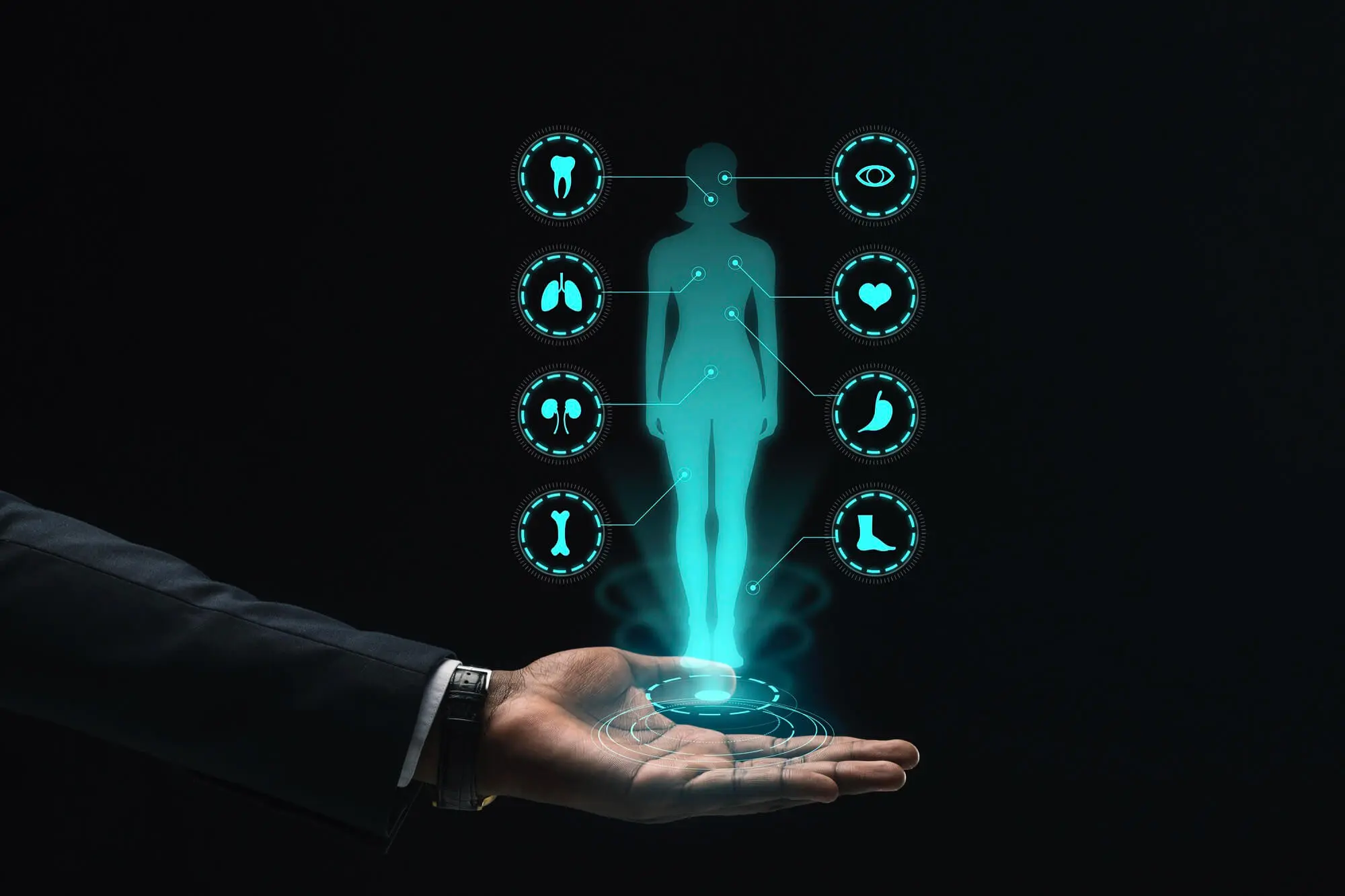Digital Health Twin: A Glimpse Into Your Future
How AI could predict diseases and make prevention more precise

Medical research is moving rapidly towards a future in which diseases cannot be treated first, but can be identified and stopped as they arise. One key to this is the so-called digital health twin — a virtual image of your own body, created from a variety of individual data and constantly updated.
At the Weizmann Institute of Science in Israel, a research team is working to make this vision a reality. The basis is that Human Phenotype Project, one of the most comprehensive health studies in the world. Since 2018, thousands of participants have been supported over decades. Detailed tests are carried out every two years, ranging from blood and microbiome analyses to genetic profiles to bone density measurements, sleep data, nutrition diaries and continuous blood sugar measurements. The aim is to capture a complete picture of individual health over time.
The promise of the digital health twin
From this data, artificial intelligence learns to recognize patterns and predict developments. First results are promising:
- Early diagnosis: The model may increase the risk of type 2 diabetes years before the onsetidentify.
- Determine biological age: The AI analyses how “old” individual body systems really are — an indicator that is often more precise than the calendar age.
- Simulate individual scenarios: What happens when you change your diet, intensify your workout, or take a specific medication? The digital twin can predict how such changes will affect personal health.
- Microbiome as an early warning system: Changes in the intestinal flora can indicate diseases such as endometriosis, breast cancer or chronic inflammatory bowel diseases.
The opportunity to test preventive strategies in advance is particularly exciting. Instead of relying on general recommendations, future measures could be based on highly personalized forecasts.
In the long term, every person could track their own health history via a digital interface — including scientifically based recommendations as to which steps would bring the greatest benefit. This brings us closer to medicine that not only treats illnesses but also actively shapes health.
Opportunities and open questions
Such developments are not only a milestone for research, but also an outlook on what prevention and longevity medicine could look like in the coming decades.
Opportunities:
- Prevention instead of treatment
- Personalized recommendations with proven benefits
- Early risk identification
Challenges:
- Privacy and data security
- High costs of complex investigations
- Risk of over-interpreting forecasts
How close are we?
As fascinating as the concept of the digital health twin is, in Europe, it remains a glimpse of the future for now. Data protection requirements such as the GDPR, the need for large and long-term data sets, and the necessary medical validation pose significant hurdles. In the next five years, initial applications are likely to be limited primarily to specialized pilot projects and private longevity programs. Realistically speaking, broad integration into the public health system is only conceivable in a period of ten to twenty years — and only if data protection, financing and practical feasibility are resolved convincingly.
Nevertheless, the digital health twin is one of the most exciting developments in preventive medicine — with the potential to fundamentally change healthcare.
References
Reicher, L., Shilo, S., Godneva, A. et al. Deep phenotyping of health–disease continuum in the Human Phenotype Project. Nat Med (2025). https://doi.org/10.1038/s41591-025-03790-9
Publiziert
6.10.2025
Kategorie
Science

Experte
Medical research is moving rapidly towards a future in which diseases cannot be treated first, but can be identified and stopped as they arise. One key to this is the so-called digital health twin — a virtual image of your own body, created from a variety of individual data and constantly updated.
At the Weizmann Institute of Science in Israel, a research team is working to make this vision a reality. The basis is that Human Phenotype Project, one of the most comprehensive health studies in the world. Since 2018, thousands of participants have been supported over decades. Detailed tests are carried out every two years, ranging from blood and microbiome analyses to genetic profiles to bone density measurements, sleep data, nutrition diaries and continuous blood sugar measurements. The aim is to capture a complete picture of individual health over time.
The promise of the digital health twin
From this data, artificial intelligence learns to recognize patterns and predict developments. First results are promising:
- Early diagnosis: The model may increase the risk of type 2 diabetes years before the onsetidentify.
- Determine biological age: The AI analyses how “old” individual body systems really are — an indicator that is often more precise than the calendar age.
- Simulate individual scenarios: What happens when you change your diet, intensify your workout, or take a specific medication? The digital twin can predict how such changes will affect personal health.
- Microbiome as an early warning system: Changes in the intestinal flora can indicate diseases such as endometriosis, breast cancer or chronic inflammatory bowel diseases.
The opportunity to test preventive strategies in advance is particularly exciting. Instead of relying on general recommendations, future measures could be based on highly personalized forecasts.
In the long term, every person could track their own health history via a digital interface — including scientifically based recommendations as to which steps would bring the greatest benefit. This brings us closer to medicine that not only treats illnesses but also actively shapes health.
Opportunities and open questions
Such developments are not only a milestone for research, but also an outlook on what prevention and longevity medicine could look like in the coming decades.
Opportunities:
- Prevention instead of treatment
- Personalized recommendations with proven benefits
- Early risk identification
Challenges:
- Privacy and data security
- High costs of complex investigations
- Risk of over-interpreting forecasts
How close are we?
As fascinating as the concept of the digital health twin is, in Europe, it remains a glimpse of the future for now. Data protection requirements such as the GDPR, the need for large and long-term data sets, and the necessary medical validation pose significant hurdles. In the next five years, initial applications are likely to be limited primarily to specialized pilot projects and private longevity programs. Realistically speaking, broad integration into the public health system is only conceivable in a period of ten to twenty years — and only if data protection, financing and practical feasibility are resolved convincingly.
Nevertheless, the digital health twin is one of the most exciting developments in preventive medicine — with the potential to fundamentally change healthcare.
Referenzen
Reicher, L., Shilo, S., Godneva, A. et al. Deep phenotyping of health–disease continuum in the Human Phenotype Project. Nat Med (2025). https://doi.org/10.1038/s41591-025-03790-9
Publiziert
6.10.2025
Kategorie
Science

.svg)














